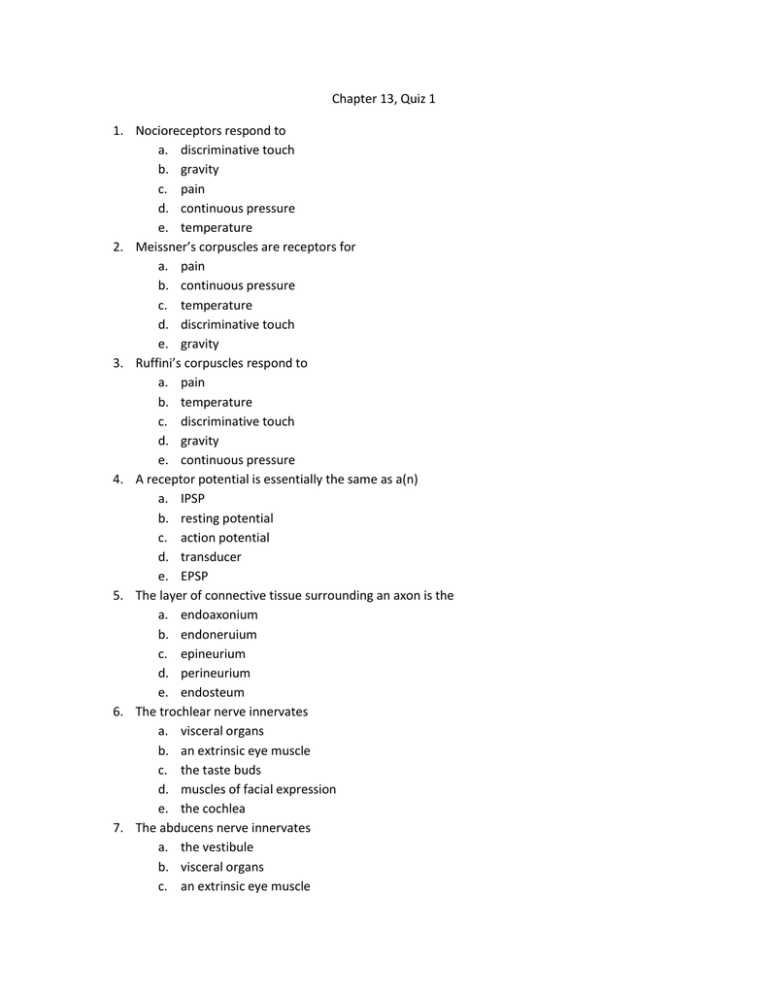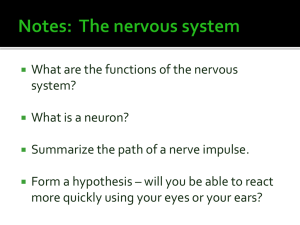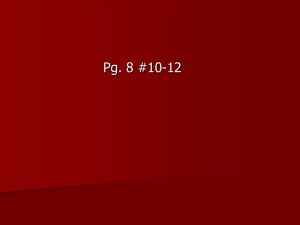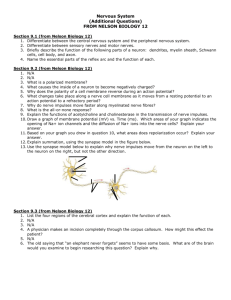Chapter 13, Quiz 1 Nocioreceptors respond to discriminative touch
advertisement

Chapter 13, Quiz 1 1. Nocioreceptors respond to a. discriminative touch b. gravity c. pain d. continuous pressure e. temperature 2. Meissner’s corpuscles are receptors for a. pain b. continuous pressure c. temperature d. discriminative touch e. gravity 3. Ruffini’s corpuscles respond to a. pain b. temperature c. discriminative touch d. gravity e. continuous pressure 4. A receptor potential is essentially the same as a(n) a. IPSP b. resting potential c. action potential d. transducer e. EPSP 5. The layer of connective tissue surrounding an axon is the a. endoaxonium b. endoneruium c. epineurium d. perineurium e. endosteum 6. The trochlear nerve innervates a. visceral organs b. an extrinsic eye muscle c. the taste buds d. muscles of facial expression e. the cochlea 7. The abducens nerve innervates a. the vestibule b. visceral organs c. an extrinsic eye muscle 8. 9. 10. 11. 12. 13. 14. d. muscle of facial expression e. the taste buds How many pairs of spinal nerves do humans have? a. 42 b. 31 c. 12 d. 5 e. 7 The correct flow of an impulse through a simplex reflex arc is a. receptor sensory neuronafferent neuron effector b. receptorefferent neuronmotor neuroneffector c. receptorefferent neuronafferent neuroneffector d. effectorsensory neuronmotor neuronreceptor e. receptorsensory neuronmotor neuroneffector All stretch reflexes are a. ipaiaynaptic and monolateral b. monosynaptic and contralateral c. monosynaptic and ipsilateral d. polysnaptic and ipsilateral e. polysynaptic and contralateral The plantar reflex a. indirectly checks the integrity of the corticospinal tracts b. indirectly checks the integrity of the rubrospinal tracts c. concerns the fanning of the toes when the lateral aspects of the plantar surface is stroked d. is the same as a positive Babinski reflex Merkel discs respond to a. deep and continuous pressure b. heat c. light touch d. joint touch e. pain Optic nerve fibers cross at the a. inferior colliculus b. optic chiasm c. decussation d. copus callosum e. pyramids The phrenic nerve a. arises from the lumbar enlargement b. innervates the intercostals muscles c. innervates the diaphragm d. arises from the brachial plexus e. innervates the perineum 15. The feeling that results from striking the “funny bone” is actually caused by striking the a. phrenic nerve b. femoral nerve c. sciatic nerve d. ulnar nerve e. radial nerve Answer Key 1 2 3 4 5 6 7 8 9 10 11 12 13 14 15






